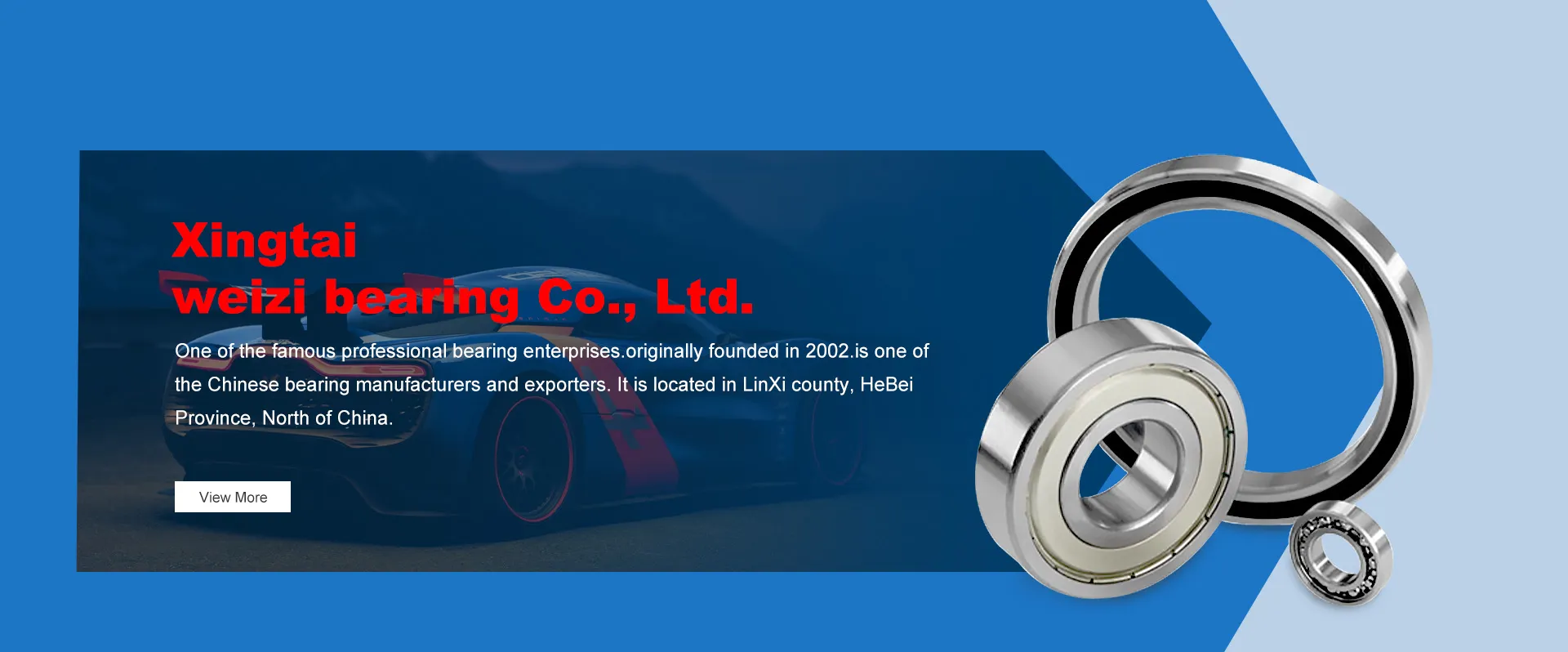
Nov . 06, 2024 06:32 Back to list
Understanding the Features and Benefits of Deep Groove Ball Bearings in Mechanical Applications
Understanding Deep Groove Ball Bearings
Deep groove ball bearings are one of the most commonly used types of rolling bearings, utilized in a wide array of applications across various industries. Their design and functionality allow for efficient motion and durability, making them a staple in both industrial and consumer products.
What Are Deep Groove Ball Bearings?
Deep groove ball bearings consist of an inner ring, an outer ring, a ball, and a cage that holds the balls in place. The key distinguishing feature of deep groove ball bearings is the deeper raceway grooves in both the inner and outer rings. This design allows the balls to maintain greater contact with the raceways, which significantly increases the bearing’s load-carrying capacity and stability.
These bearings are capable of supporting radial loads as well as axial loads in both directions, making them versatile for a variety of applications. Their construction often ensures less friction, resulting in improved operational efficiency and reduced heat generation.
Applications of Deep Groove Ball Bearings
Deep groove ball bearings can be found in many sectors, including automotive, aerospace, machinery manufacturing, and electronics. Their applications can range from electric motors and gearboxes to household appliances and medical devices.
1. Automotive Industry In vehicles, these bearings are used in wheel hubs, transmissions, and engine applications, where they help to reduce friction and wear between moving components.
2. Industrial Equipment In industrial machinery, such as conveyor systems and pumps, deep groove ball bearings support rotary parts, ensuring smooth operation and preventing breakdowns due to excessive wear.
3. Home Appliances Devices like washing machines and refrigerators rely on these bearings for quiet and efficient operation. The reduction of noise is particularly important in home environments.
4. Electronics In electric motors used in computer drives, fans, and other electronic products, their compact design allows for efficient and quiet performance.
what is deep groove ball bearing

Advantages of Deep Groove Ball Bearings
The popularity of deep groove ball bearings can be attributed to several advantages they offer
- Versatility They can accommodate both radial and axial loads, which makes them suitable for a diverse range of applications.
- High-Speed Capability These bearings can operate at high speeds due to their low friction characteristics, which is essential in many high-performance applications.
- Durability and Longevity With proper maintenance, deep groove ball bearings can last for a long time, offering reliable performance even in demanding environments.
- Ease of Installation Their design allows for straightforward installation, which can reduce downtime during maintenance or replacement.
- Cost-Effectiveness They are generally less expensive than other specialized bearings while still providing strong performance.
Maintenance and Considerations
While deep groove ball bearings are durable, they still require proper maintenance to ensure longevity. Regular inspection for signs of wear, contamination, or lubrication issues is essential. It is also critical to select the right bearing type and size for the specific application to optimize performance. Factors such as load conditions, speed, and environment should all be considered when choosing deep groove ball bearings.
Conclusion
Deep groove ball bearings play a critical role in the mechanics of numerous machines and equipment across various industries. Their unique design offers versatility, high-speed capability, and durability, making them an ideal choice for numerous applications. Understanding their features and how to maintain them can lead to improved efficiency and operational reliability in any mechanical system. As technology progresses, deep groove ball bearings will continue to evolve, ensuring their relevance for years to come.
Latest news
-
Premium Deep Groove Ball Bearings | High Speed & Reliability
NewsAug.29,2025
-
Durable Scaffolding Clamps - Secure & Reliable Tube Connectors
NewsAug.28,2025
-
Common Failures in Thrust Ball Bearings and Solutions
NewsAug.22,2025
-
How Tapered Roller Bearings Can Take Shock Loads
NewsAug.22,2025
-
Angular Bearings in High-Precision Spindles
NewsAug.22,2025
-
The Impact of Misalignment on Cylindrical Roller Bearing Performance
NewsAug.22,2025
